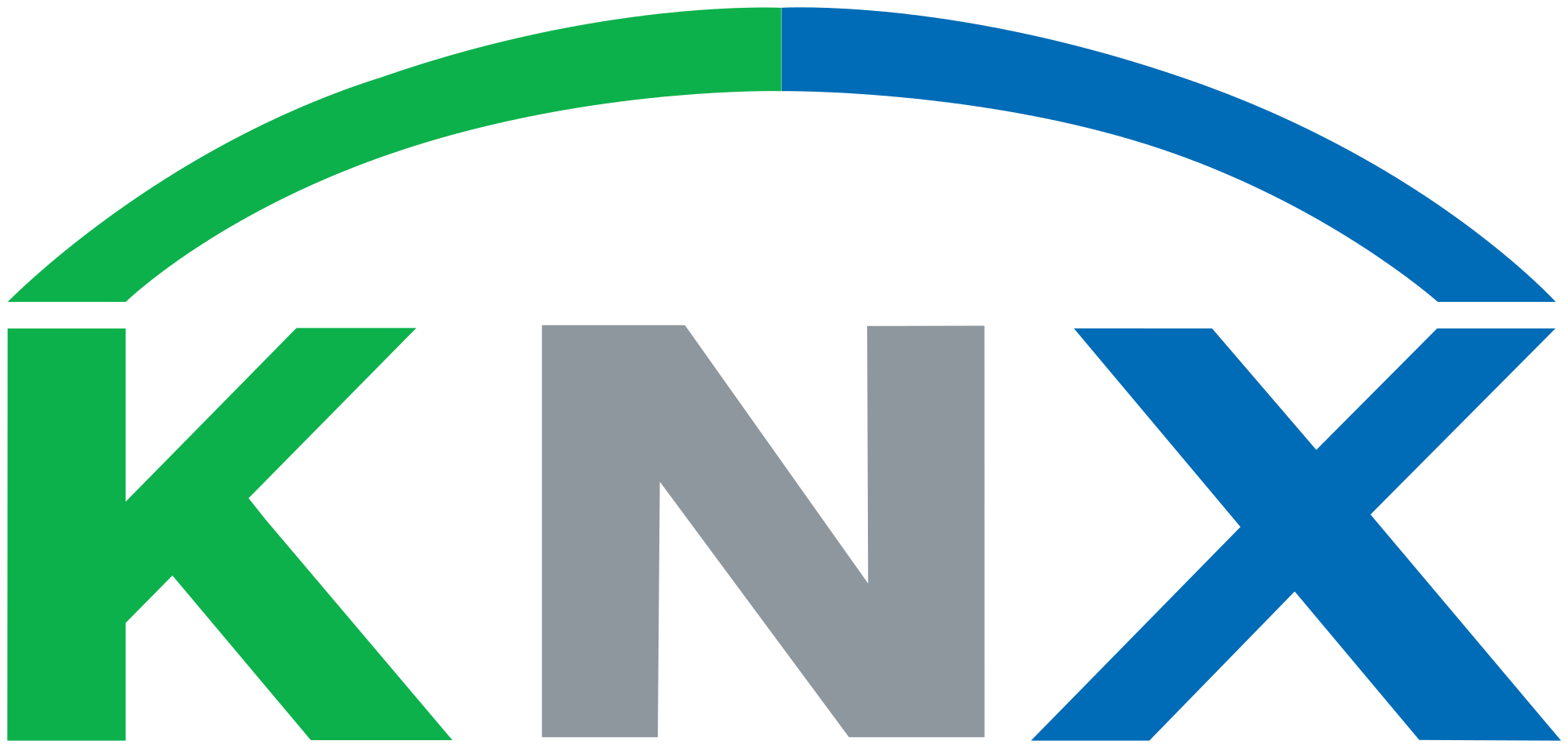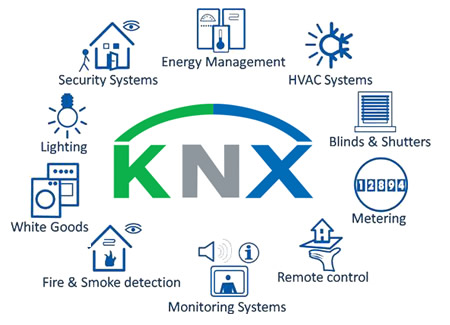Past, present and future
People live differently from how they did just a decade or two ago. We get money from cash dispensers, buy and sell goods and services over the internet, phone friends all over the world from our mobile phones, and start to moan if an MMS or e-mail takes more than 5 minutes to reach a destination in the USA. In our cars we are guided around by sat navs, and we lock and unlock the doors remotely without a key. The interior light goes on the moment we step inside, then after a while slowly dims down again. In short, for quite some time we have been enjoying cutting-edge developments in the areas of communication, entertainment and automotive technology. If we look at how technology in buildings has developed over the same period, it’s a very different story.
We still open our flat doors with conventional keys; and if we can’t find our keys fast enough, the staircase light timer switches the lights off and plunges us into darkness. True, while we’re out working all day, the heating automatically keeps our homes at a pleasant temperature but it doesn’t notice whether we left the living room window open when we went out. Only the electricity meter, ticking away quietly in a switch cabinet, notices that. Before going away for the weekend, it is wise to turn down the temperature in our hot water tanks and to turn off all those electrical appliances on standby. But no one actually does – at least, not reliably. It takes too long.
Time to do some catching up
So electrical installations in buildings have some substantial catching up to do. Networked sensors and actuators have long since been a standard feature of motor cars; buildings, on the other hand, are lagging some way behind. A change of mindset is needed, not least because of the long service life of an electrical installation. Today’s new buildings will have to adapt to numerous changes over the next few decades. Now, more than ever, buildings need to be flexible and capable of accommodating networked building services. In technical terms, all of this is already entirely feasible.

Bus technology
A far better solution is to link all sensors and actuators in the building with a “data cable”, and enable them to share information with each other .

Each device can then communicate with every other device, for example: a light switch can “talk” to a dimmer and tell it how bright to set the ceiling light; a motion sensor can tell the actuator for the corridor lighting that someone has entered the corridor, or tell the room thermostat that there is no one in the room any more, so it can turn down the temperature.
The following are examples of sensors that can send information to the bus:
• Light switches
• Dimmer switches
• Motion sensors
• Presence detectors (which can detect whether there is a person in a room even if they are not moving)
• Window and door contacts (for security and heating control)
• Doorbell buttons for front doors
• Water, gas, electricity and heat meters
• Overvoltage sensors
• Temperature sensors for indoor and outdoor air
• Temperature sensors in heating and hot water circuits
• Modules for preselecting room temperature setpoints
• Brightness sensors for indoors and outdoors, e.g. for constant lighting control
• Wind sensors for controlling blinds
• Fault and system status messages for white goods (washing machine, clothes dryer, dishwasher, cooker, etc.)
• Leak sensors, e.g. in laundry room
• Level measurements e.g. for rain water tank, oil tank, wood pellet store
• Radio receivers for door locks
• Receivers for infrared remote controls
• Fingerprint modules and card readers for access control
The following are examples of actuators that can be controlled via the bus:
• Relays for switching room lights on and off
• Dimmers and DALI-gateways
• Electric thermostatic radiator valves
• Temperature displays
• Drive mechanisms for awnings, blinds, curtains and garage doors
• Drive mechanisms for windows
• Circulator pumps for heating systems
• Valve control systems, e.g. for solar thermal installations
• Alarms (lights and buzzers)
• Information displays and indicator LEDs
• Relays for making and breaking socket outlet circuits (standby cut-off)
• Well pumps
• Air conditioning systems
• Ventilation systems (toilet/ bathroom extractor fans, controlled ventilation for living areas)
• Control of washing machine, dryer, dishwasher
• Consumer electronics
• Trigger signals for alarm systems
• Telephone systems
• Electric door openers and door locking systems

Why KNX
There are several bus technologies on the market. All of them are beneficial and appropriate for certain areas of application. But no other bus system is supported byas many different manufacturers as KNX.This is becaus:
• All strong brands in the building installation sector are pushing KNX technology
• KNX was developed specifically to meet the needs of electrical installations in buildings
• KNX devices are installed, programmed and parameterised by fully qualified system integrators
• KNX is well-established and can accommodate a huge range of functions
• There are several thousand KNX-certified product groups available, covering every conceivable field of application
• KNX products are tested for conformity by an independent third party test laboratories
• KNX products are compatible with products from all manufacturers (interworking)
• End customers benefit from an extensive network of specialist tradesmen with solid KNX skills accredited by KNX-certified training centres
• The PC software ETS can be used to plan, design and commission installations of KNX-certified products from any manufacturer
• KNX supports all communication media

Where does the name KNX come from?
The KNX building automation system was originally known as the European Installation Bus (EIB), and was developed and marketed by the EIB Association (EIBA). In 1999, EIBA, Batibus Club International (BCI, France) and the European Home Systems Association (EHSA, Netherlands) amalgamated, the name KNX was adopted, and the Brussels- based KNX Association was set up. The technology used in modern KNX devices is compatible with that of the old EIB system, so all devices bearing either the KNX or the EIB logo are mutually compatible.
Ref: www.knx.org/media/docs/Flyers/KNX-Basics/KNX-Basics_en.pdf